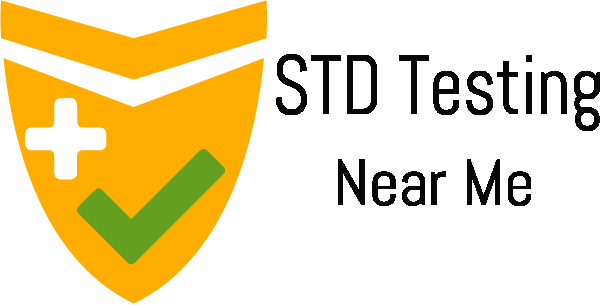When is the right time to get tested? Should you get an STD test right away? or is it better to wait?
Well, that depends get tested today if you’ve had more than one partner in the last year and you’ve had unprotected sex.But if you’ve had sex with someone recently and want to rule out STDs from that encounter, get tested in three weeks from that day and then again in three months. This is because all STDs take time to become detectable. This time period is called STD testing window.
What is an STD testing window?
STD testing window is the time between getting an STD and having it show up on a test.
For example: let’s talk about Bob. On Saturday, Bob had sex with somebody and he didn’t use a condom and now on Monday is getting worried and wants to make sure that he didn’t get anything. Because STDs don’t always have symptoms, so he wants to get tested. If Bob got an STD a week ago it may not be detectable yet. Our doctors would tell Bob to wait until 3 weeks after the day he had sex to get tested.
If this was the only time Bob had an unsafe sexual encounter. But this wasn’t the first time Bob didn’t use a condom. Things happen and for Bob things happened a few times over the year. So here’s the recommendation
If you had more than one partner in the last year and have had unprotected sex get tested today.
But if you are really worried about what happened let’s say two days ago set a reminder to get tested in three weeks.from that day and then get tested again in three months.
Also read: Check STD testing accuracies
Why wait for 3 three months?
Well, STDs like HIV and herpes take a longer time to develop. So you want to make sure you don’t get what’s called a false negative.
This can happen if you get tested before the infection is detectable so by waiting three weeks and then testing again in three months you’ll increase the likelihood that you can pick up everything at the right time.
Also read : When to get tested for STDs based on the duration of your relationship and number of partners
Best time to get tested for all STDs for accurate results
Let’s have an STD incubation period chart which answers the time it takes for an std to show up on a test or if STD symptoms appear immediately or the next day?
| Sr. No | Type of STD tests | Immediate detection time-frame | Detection period | Re-test required after treatment in: |
| 1 | Chlamydia (urine test) | 1 day to 5 days | Possible Detection – Within the first week Most Likely Detection – 2 Weeks Highest Accuracy – 4 Weeks |
2 weeks |
| 2 | Gonorrhea (urine test) | 2 to 7 days | Possible Detection – Within the first week Most Likely Detection – 1-2 Weeks Highest Accuracy – 2-3 Weeks |
2 weeks |
| 3 | Syphilis | 3 to 6 weeks | Possible Detection – 3-4 Weeks Most Likely Detection – 6 Weeks Highest Accuracy – 12 Weeks |
12 weeks |
| 4 | Hepatitis A | 2 to 7 weeks | Possible Detection – 2-3 Weeks Most Likely Detection – 3-6 Weeks Highest Accuracy – 6-7 Weeks |
Not required, virus remains in the body for lifelong period |
| 5 | Hepatitis B | 3 to 6 weeks | Possible Detection – 3-6 Weeks Most Likely Detection – 6-10 Weeks Highest Accuracy – 12 Weeks |
Not required, virus remains in the body for lifelong period |
| 6 | Hepatitis C | 8-9 Weeks | Possible Detection – 7-8 Weeks Most Likely Detection – 6-9 Weeks Highest Accuracy – 10-12 Weeks |
after 12 weeks |
| 7 | HIV (antibody test) | 4 to 12 weeks | Possible Detection – 4 Weeks Most Likely Detection – 4-6 Weeks Highest Accuracy – 12 Weeks |
Not required, virus remains in the body for lifelong period |
| 8 | HIV (RNA test) | 9 to 11 days | Highest Accuracy – 9 to 11 days | Not required, virus remains in the body for lifelong period |
| 9 | Herpes Simplex 1 & 2 (HSV1, HSV2): | 2 to 4 weeks | Possible Detection – 2-4 Weeks Most Likely Detection – 6-12 Weeks Highest Accuracy – 12-16 Weeks |
12 weeks |
STD statistics by age, which age group is at the highest risk of infection group?
| Sr. No | Type of STD | No. of cases | Highest proportion of cases in age group |
| 1 | Chlamydia | Over 1 million cases each year | women aged 15 to 24 years |
| 2 | Gonorrhea | Over 300,000 new cases each year | women aged 15 to 24 years & men aged 20 to 24 years |
| 3 | Syphilis | Over 45000 new cases each year | men and women between 15 to 44 years accounted for 79.6% of reported cases |
| 4 | HPV | Over 6 million new cases each year | 20–29 age-group (9.1%) and the second peak appearing in ≥50 age-groups (5.9%–6.4%). |
| 5 | Hepatitis B-C | Over 43000 cases each year | HCB : N/A; HCV : 50–59 years |
| 6 | HIV (antibody test) | Over 30,000 new cases each year | 13 to 24 years accounted for 22% of all new HIV diagnoses, 81% new diagnosed are gay or bisexual men |
| 7 | Herpes Simplex 1 & 2 Blood Test: | Over 1 million cases each year | 67% of people reported herpes, aged 15-49 years |
| 8 | Trichomoniasis | Over 7 million new cases each year | 2.3 million (3.1%) among women ages 14-49 |
Verdict
Depending on the age group, symptoms one should immediately opt for the STD testing. Testing enables timely treatment, before the disease casuing permanent harm.Walk in STD testing center near you should be a good option, to begin.
Click here to book an appointment and get a coupon=10OffOrder


